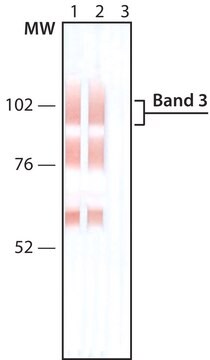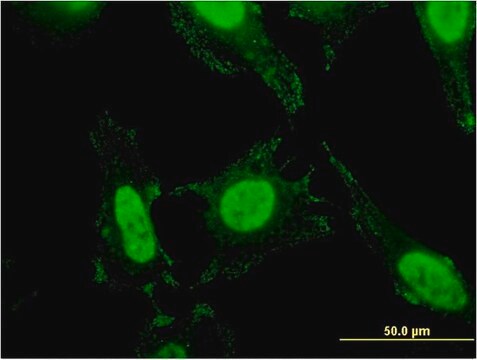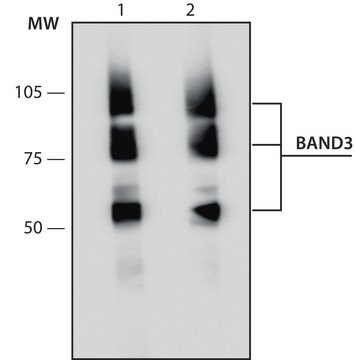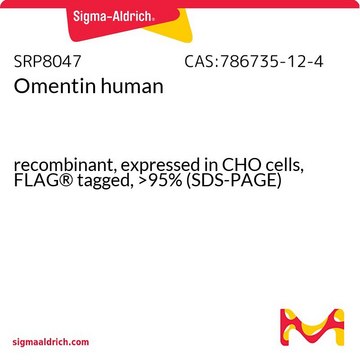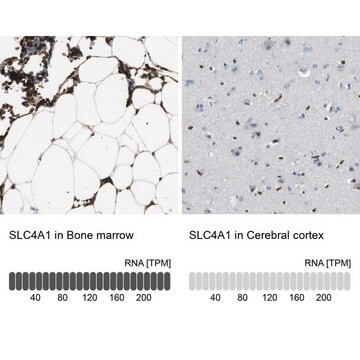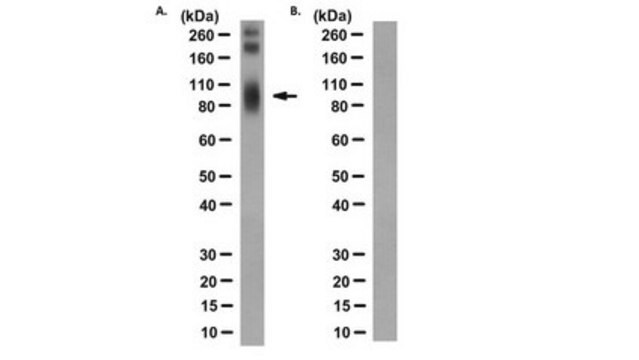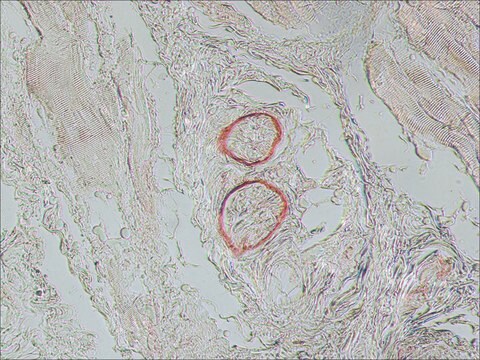Wichtige Dokumente
G7900
Monoclonal Anti-Glycophorin A (α) antibody produced in mouse
ascites fluid, clone E4
About This Item
FACS
IF
WB
flow cytometry: suitable using bone marrow nucleated cells
indirect immunofluorescence: suitable using bone marrow nucleated cells
western blot: suitable using extracts of human red blood cell ghosts
Empfohlene Produkte
Biologische Quelle
mouse
Konjugat
unconjugated
Antikörperform
ascites fluid
Antikörper-Produkttyp
primary antibodies
Klon
E4, monoclonal
Enthält
15 mM sodium azide
Speziesreaktivität
human
Methode(n)
agglutination assay: 1:800 using human erythrocytes
flow cytometry: suitable using bone marrow nucleated cells
indirect immunofluorescence: suitable using bone marrow nucleated cells
western blot: suitable using extracts of human red blood cell ghosts
Isotyp
IgM
UniProt-Hinterlegungsnummer
Versandbedingung
dry ice
Lagertemp.
−20°C
Posttranslationale Modifikation Target
unmodified
Angaben zum Gen
human ... GYPA(2993)
Spezifität
Immunogen
Anwendung
- agglutination assay at a working dilution of 1:800 using human erythrocytes
- flow cytometry using bone marrow nucleated cells
- indirect immunofluorescence using bone marrow nucleated cells
- western blot using extracts of human red blood cell ghosts
Biochem./physiol. Wirkung
Haftungsausschluss
Sie haben nicht das passende Produkt gefunden?
Probieren Sie unser Produkt-Auswahlhilfe. aus.
Lagerklassenschlüssel
10 - Combustible liquids
WGK
nwg
Flammpunkt (°F)
Not applicable
Flammpunkt (°C)
Not applicable
Hier finden Sie alle aktuellen Versionen:
Besitzen Sie dieses Produkt bereits?
In der Dokumentenbibliothek finden Sie die Dokumentation zu den Produkten, die Sie kürzlich erworben haben.
Unser Team von Wissenschaftlern verfügt über Erfahrung in allen Forschungsbereichen einschließlich Life Science, Materialwissenschaften, chemischer Synthese, Chromatographie, Analytik und vielen mehr..
Setzen Sie sich mit dem technischen Dienst in Verbindung.